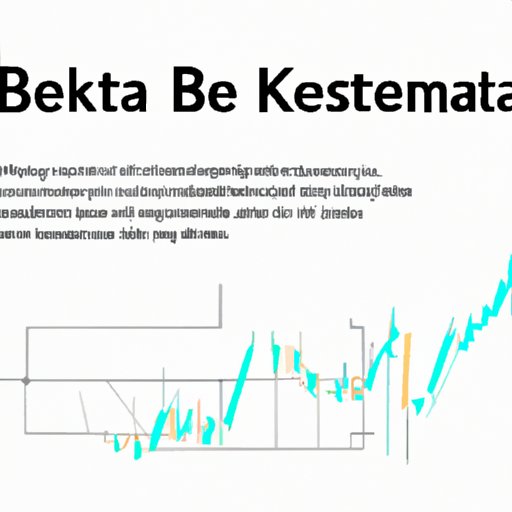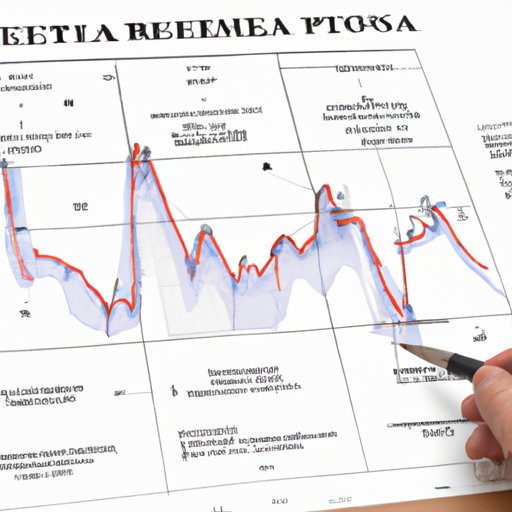Introduction
Beta is a measure of a security’s volatility relative to the overall market. It is used to measure the risk associated with investing in a particular stock or other security. In the financial markets, beta is an important tool for investors and analysts when making decisions about investments. The purpose of this article is to explore what beta is in financial markets and how it is used to assess risk and make better investment decisions.

Exploring the Basics of Beta in Financial Markets
An overview of beta can provide insight into how it is used in the financial markets. Beta measures the volatility of a security relative to the overall market. A stock with a beta of 1 means that the stock moves in line with the market. A stock with a beta higher than 1 is more volatile than the market, and a stock with a beta lower than 1 is less volatile than the market. Beta is calculated by comparing a security’s price movements to the movements of the overall market over a certain period of time.
The relationship between beta and volatility is important to understand when using beta to assess risk. Volatility is a measure of how much a security’s price changes over time. A security with a high beta is more volatile than one with a low beta. This means that a high-beta stock has a greater potential for both gains and losses than a low-beta stock. As such, a high-beta stock is considered to be riskier than a low-beta stock.
Using beta to assess risk is a common practice in the financial markets. Beta provides information about the risk associated with a particular security, which can help investors make informed investment decisions. By understanding the relationship between beta and volatility, investors can use beta to determine whether a security is suitable for their individual risk tolerance and investment objectives.
Understanding Risk: How Beta Can Help Investors
There are several benefits of using beta to measure risk. First, beta helps investors identify stocks that may be more suitable for their individual risk tolerance. By understanding the relationship between beta and volatility, investors can evaluate a security’s riskiness and determine if it is appropriate for their own risk profile. Second, beta can help investors determine the potential returns of a security. By understanding the relationship between beta and volatility, investors can estimate the expected return of a security based on its level of risk.
In addition to measuring risk, beta can also be used to make better investment decisions. By understanding the relationship between beta and volatility, investors can assess the potential upside and downside of a security before making an investment. This can help investors make more informed decisions about which securities to include in their portfolios.

The Benefits of Using Beta in Financial Decisions
Beta can also be used to evaluate the performance of investments. By understanding the relationship between beta and volatility, investors can compare the performance of a security to the overall market and determine if it is outperforming or underperforming. This can be useful for investors who want to monitor their investments and ensure they are performing as expected.
Calculating beta can also be helpful for analyzing portfolio management. By understanding the relationship between beta and volatility, investors can identify which securities are more or less volatile than the overall market. This can help investors identify which securities should be included in their portfolios and which ones should be avoided.

Examining the Impact of Beta on Portfolio Management
Analyzing stock movements with beta analysis can also be beneficial for portfolio management. By understanding the relationship between beta and volatility, investors can track the performance of individual securities and determine if they are underperforming or outperforming the overall market. This can help investors identify stocks that are worth holding onto or those that should be sold.
Finally, beta can be used to analyze the risk of a portfolio. By understanding the relationship between beta and volatility, investors can calculate the overall risk of their portfolios and determine if they are taking on too much or too little risk. This can help investors make better portfolio management decisions and reduce their exposure to unnecessary risk.
Conclusion
In conclusion, beta is an important measure of a security’s volatility relative to the overall market. It is used to measure the risk associated with investing in a particular stock or other security. By understanding the relationship between beta and volatility, investors can use beta to assess risk and make better investment decisions. Additionally, beta can be used to evaluate the performance of investments and analyze portfolio management. Overall, beta is a valuable tool for investors and analysts in the financial markets.
(Note: Is this article not meeting your expectations? Do you have knowledge or insights to share? Unlock new opportunities and expand your reach by joining our authors team. Click Registration to join us and share your expertise with our readers.)
